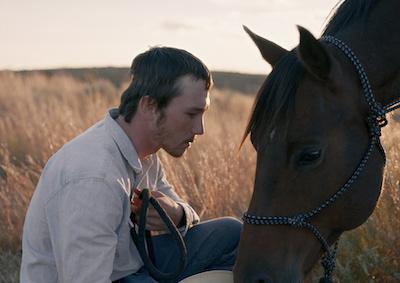After a pandemic-induced delay, the UCLA Film & Television Archive resumes its survey of the impact of Italian Neorealism on American cinema. American Neorealism, Part Two, 1984-2020 is a 12-night survey of independent films from the last four decades that vibrantly illustrates the continued relevance and vitality of the form. The series’ first part, American Neorealism, Part 1: 1948-1984, looked at Italian Neorealism’s direct echoes in the postwar era. At that time, the works of Roberto Rossellini (Rome, Open City, 1945), Vittorio De Sica (Bicycle Thieves, 1948), Luchino Visconti (La Terra Trema, 1948) and others were inspiring filmmakers around the world to find a new means of production, and a new cinematic language for representing their social and material realities. The hallmarks of the form—nonprofessional actors, location shooting, open-ended structures, and stark depictions of unpolished reality—positioned the lives of individual characters and communities within larger movements of history, economics and politics. It was what Millicent Marcus described as “una nuova poesia morale,” a new moral poetry. In America, its influence could be felt at the fringes of Hollywood in figures such as Jules Dassin and Ida Lupino, but it was most strongly realized beyond the studios in a new generation of independent filmmakers highlighted in Part One, including John Cassavetes, Shirley Clarke, Barbara Loden and Charles Burnett.
Part Two finds these cinematic qualities not just intact, but thriving—and naturally, transformed. The rise of Sundance and regional film festivals, the emergence of a vibrant—if unpredictable—independent film market, the advent of digital technologies and new influences from Europe (most notably the films of Luc and Jean-Pierre Dardenne) have each had their impact on the form and its practitioners while the increasing social, racial and economic inequality of the post-9/11 era has given them new urgency. Films by Ramin Bahrani (Man Push Cart), Kelly Reichardt (Wendy and Lucy), So Yong Kim (Treeless Mountain), Jim McKay (Our Song) and others, led New York Times film critic A.O. Scott to declare in 2009 a movement he coined “Neo-Neo Realism.” Part Two is indebted to Scott’s taxonomy, as well as New Yorker critic Richard Brody’s rebuttal to it, while extending in scope to include subsequent developments.
Whereas in Part One we were working with a small group of stellar works of which some had already been canonized (though not previously identified in this grouping), Part Two offered an abundance of cinematic riches that defies the whole idea of canonical containment. America as a multi-faceted panoply of different lives is nowhere so present as in these films. Indeed, the films presented in Part Two reflect, in their very DNA, the sheer diversity of today’s America.
Another interesting distinction from Part One is the sheer number of brilliant filmmakers who cut their teeth in neorealism before going on to successful industry careers. Filmmakers like Barbara Loden and Charles Burnett brushed elbows with Hollywood, and sometimes operated on its edges, but remained largely independent. The fact that the industry now has room for the likes of Bahrani, Sean Baker, Ryan Fleck, Anna Boden, Garret Bradley, David Gordon Green and Chloé Zhao is an intriguing development, allowing these artists to bring their cinematic values to an even wider audience.
Ultimately Part Two seeks to re-examine a lineage from the Italian neorealists to their early American counterparts, tracing through to the present day; a thread underscoring the importance of cinematic form in direct portraits of a complex world. As with our previous installment, Part Two is not meant to be comprehensive or definitive in its own taxonomy of American neorealism but rather we hope to further a conversation long under way, fuel more discoveries, and inspire more filmmaking.
Series curation and program notes by Paul Malcolm and Ross Lipman.






 Mobile Navigation
Mobile Navigation













